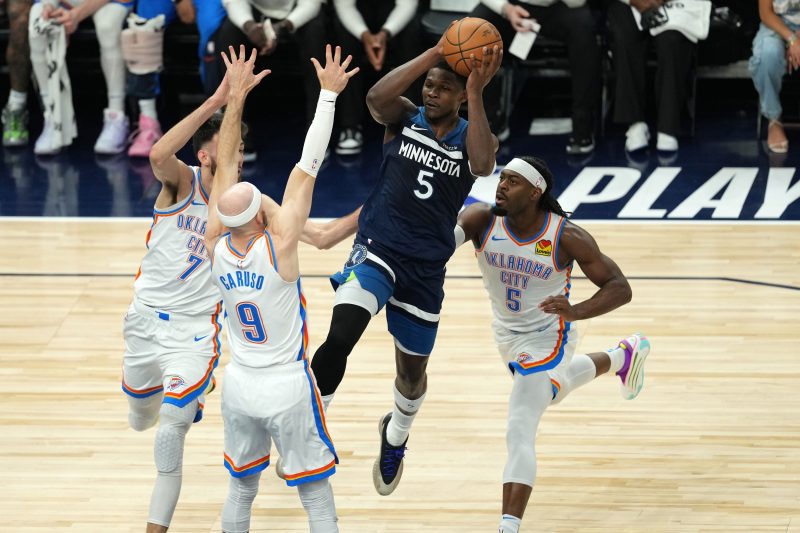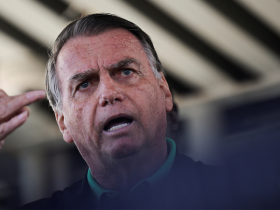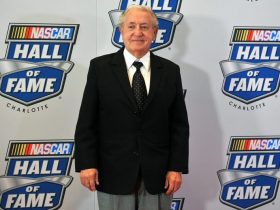To slow Anthony Edwards, the Oklahoma City Thunder returned to their strategy from Games 1 and 2 of the Western Conference finals.
Edwards, the unquestioned top threat for the Timberwolves, finished Monday night’s Game 4 loss with 16 points on 5-of-13 shooting, as Minnesota fell into a 3-1 hole. Oklahoma City put multiple bodies in front of Edwards, mirroring its plan from early in the series. And if Minnesota’s postseason run does indeed end here, Oklahoma City’s defensive plan on Edwards can be seen as nothing but decisive.
“I thought the second half was more aggressive,” Timberwolves coach Chris Finch said after the game. “He got downhill, we got him off the ball a bit more. When he got to the paint, I thought he found some people, made the right plays. First half, I thought he lagged behind a little bit too much; he needed to get out in front so that we could stretch the floor and screen for him a bit. But the second half was much better.”
Finch is not wrong. Edwards did start the game deferring considerably, taking his first shot attempt — a driving layup through three Thunder defenders — when there were 35 seconds left in the first quarter. He took just one shot in the second quarter and had attempted his third after nearly two minutes had passed in the third quarter.
But even when Edwards did take actions to assert himself, the Thunder made life difficult. Oklahoma City took advantage of the game being officiated loosely, allowing for physicality along the perimeter.
Therefore, when the Timberwolves launched screen actions on pick-and-rolls, Thunder defenders like Luguentz Dort and Alex Caruso could hand check and body Edwards. And when Edwards was able to slip through the first line, the Thunder clogged the paint with more bodies, tempting Edwards to kick the ball out.
This has been the desired outcome for Oklahoma City throughout the series: pester Edwards enough with one or two bodies, forcing the ball out of his hands.
“I thought Dort early in the game on Edwards was really, really on it,” Thunder coach Mark Daigneault said after the game. “He set a great tone and established a level of energy and activity with him that was important. We really made him work for the ball. We really made him work for his shots.”
But even when Edwards sought a switch to Oklahoma City’s center, Chet Holmgren did an excellent job of facing up and using his length to contest deep 3s.
Shot attempt splits have certainly been a problem for Edwards this series — he put up just 13 shot attempts in losses in Games 1 and 4 — but the primary issue has been his inefficiency from deep. In Minnesota’s lone victory, in Game 3 on Saturday, Edwards flushed 5-of-8 shots (62.5%) from beyond the arc.
After going just 1-of-7 Monday night, Edwards is 5-of-24 (20.8%) across the three Timberwolves series losses.
it’s difficult to see the Timberwolves becoming the 14th team in NBA playoff history to overcome a 3-1 deficit without Edwards drastically improving his 3-point efficiency.
Minnesota must also fix its turnovers issue, after committing 23 Monday night, five by Edwards.
“I don’t look at it like I struggled,” Edwards told reporters after the game. “They had a good game plan, making us get off the ball — especially for me, man, they was super in gaps. I made the right play all night. So I don’t look at it like I struggled. I didn’t get enough shots to say I struggled. That might be how you guys look at it, but, yeah, I didn’t struggle at all, I made the right play.”








